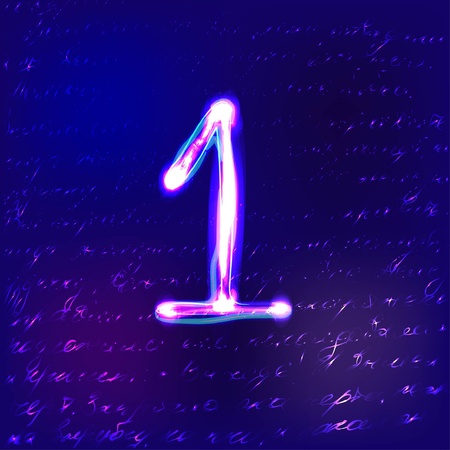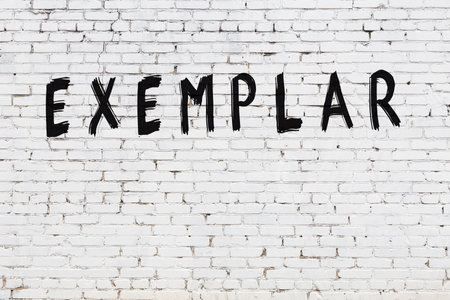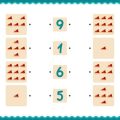1. Origins and Evolution of Out-of-Body Experiences and Lucid Dreams in America
Out-of-body experiences (OBEs) and lucid dreams have a rich history in American metaphysical communities. These phenomena, once seen as mystical or even taboo, have become more mainstream thanks to the country’s unique blend of spiritual curiosity, scientific inquiry, and cultural openness. Let’s explore how OBEs and lucid dreaming developed and adapted within the diverse landscape of American spiritual traditions.
Early Influences and Spiritual Movements
American interest in OBEs and lucid dreams can be traced back to the 19th-century spiritualist movement. During this time, mediums and psychics claimed to leave their bodies to communicate with spirits, sparking public fascination. The rise of Theosophy and New Thought philosophies further encouraged Americans to explore altered states of consciousness.
Key Historical Milestones in American OBE and Lucid Dreaming Culture
| Year/Period | Event/Development |
|---|---|
| 1800s | Spiritualism popularizes séances and trance states |
| Late 1800s–Early 1900s | Theosophical Society promotes astral projection concepts |
| 1960s–1970s | Counterculture embraces Eastern philosophies; interest in dream work grows |
| 1980s–Present | Scientific studies on sleep, dreams, and consciousness expand; self-help literature on lucid dreaming rises |
Cultural Adaptation: Blending Science, Spirituality, and Everyday Life
Unlike many countries where OBEs remain primarily spiritual or religious topics, America’s approach is unique. Here, people often mix science with spirituality. Researchers like Robert Monroe began to study OBEs using scientific methods, while bestselling books brought lucid dreaming into living rooms across the nation. Today, many Americans see these experiences as tools for personal growth, creativity, or even stress relief.
Mainstream Acceptance in Modern America
| Aspect | Description |
|---|---|
| Research Institutions | The Monroe Institute offers OBE training programs in Virginia |
| Pop Culture Influence | Movies like “Inception” spark public interest in lucid dreaming |
| Online Communities | Reddit forums and Facebook groups connect experiencers nationwide |
| Therapeutic Use | Mental health professionals sometimes use lucid dreaming for nightmare therapy |
The American Metaphysical Community Today
The result of this historical journey is a vibrant community that blends traditional beliefs with modern practices. Whether through meditation retreats, scientific workshops, or online support groups, Americans from all backgrounds continue to explore the boundaries between waking life and conscious dreaming. This uniquely American approach continues to shape the way OBEs and lucid dreaming are experienced today.
2. Key Figures and Influencers in the American Metaphysical Movement
Shaping the Conversation: People, Authors, and Organizations
The exploration of out-of-body experiences (OBEs) and lucid dreams in the United States has been shaped by a diverse group of thinkers, writers, and organizations. These key figures not only introduced groundbreaking ideas but also created spaces for Americans to explore metaphysical concepts in ways that resonate with local culture and values.
Prominent Individuals
| Name | Main Contribution | Cultural Impact |
|---|---|---|
| Robert Monroe | Pioneered OBE research, founded The Monroe Institute | Brought scientific credibility to OBEs, popularized “astral travel” in mainstream America |
| William Buhlman | Author, educator on OBEs and consciousness expansion | Made OBE techniques accessible through workshops and books like “Adventures Beyond the Body” |
| Stephen LaBerge | Stanford researcher, advanced lucid dream science | Bridged academic research with practical methods for lucid dreaming; founder of The Lucidity Institute |
| Carl Jung (influence) | Swiss psychologist whose work influenced US metaphysical thought | Brought dream analysis into American pop culture, influencing how dreams are interpreted spiritually and psychologically |
| Eben Alexander | Neurosurgeon who shared his near-death/OBE story in “Proof of Heaven” | Sparked renewed American interest in consciousness after death and spiritual experiences beyond the body |
Influential Authors & Thought Leaders
- Celia Green: British author whose research inspired American metaphysical communities to take OBEs seriously as a field of study.
- Rick Strassman: Known for his DMT studies, he linked altered states to ancient spiritual traditions, bridging science and mysticism for American readers.
- Pamela Ball: Her dream interpretation guides became staples in American bookstores, making dreamwork approachable for everyday people.
Pivotal Organizations in the U.S.
| Organization Name | Main Role/Contribution |
|---|---|
| The Monroe Institute (Virginia) | Pioneers research, education, and retreats focused on OBEs and expanded consciousness using audio technology (“Hemi-Sync”) |
| The Lucidity Institute (California) | Founded by Stephen LaBerge; conducts scientific research, offers online courses and workshops on lucid dreaming techniques |
| The International Association for the Study of Dreams (IASD) | An international community based in the U.S. that fosters dream research, conferences, and dream-sharing groups across America |
| The Rhine Research Center (North Carolina) | A hub for parapsychological research including studies on OBEs and related phenomena since the 1930s |
| The Out-of-Body Experience Research Foundation (OBERF) | A digital platform where Americans share personal OBE stories, promoting collective learning and support |
American Pop Culture’s Embrace of OBEs & Lucid Dreams
From Hollywood movies like “Inception” and “The Matrix” to TV shows such as “Stranger Things,” American media has amplified public curiosity about OBEs and lucid dreaming. These cultural touchstones often draw inspiration from the real-life work of researchers and organizations listed above—making metaphysical experiences both a scientific pursuit and a staple in everyday conversation.

3. Community Practices and Rituals: How Americans Explore Altered States
Across the United States, metaphysical communities have created a rich tapestry of practices and rituals designed to help members access and understand out-of-body experiences (OBEs) and lucid dreaming. These groups, ranging from urban meetup circles in Los Angeles to rural retreats in Vermont, often blend American cultural values like individual exploration with group learning. Here’s how these communities dive into altered states:
Common Practices in OBE and Lucid Dreaming Groups
| Practice | Description | American Context |
|---|---|---|
| Guided Meditation Sessions | Facilitators lead members through step-by-step visualizations aimed at inducing OBEs or lucid dreams. | Popular in wellness centers; often incorporate mindfulness trends popular in American self-care culture. |
| Dream Journaling Workshops | Participants are encouraged to record their dreams every morning and share insights within the group. | A staple at metaphysical bookstores and yoga studios, tying into America’s journaling and self-improvement traditions. |
| Group Sharing Circles | Safe spaces where members recount personal OBE or lucid dream experiences for mutual learning. | Echoes American support group models—think AA or book clubs—fostering community bonding. |
| Lucid Dream Induction Techniques | Training on reality checks, intention setting, and sleep routines that boost dream awareness. | Adapted for busy American lifestyles; often paired with tech like sleep trackers or mobile apps. |
| Weekend Retreats & Workshops | Immersive events featuring expert speakers, hands-on exercises, and communal meals. | Frequently held at scenic American locations; blends spiritual growth with vacation culture. |
Gatherings Unique to the U.S. Metaphysical Scene
- Annual Conventions: Major cities like Chicago and San Francisco host conventions focused on OBEs and lucid dreaming, attracting enthusiasts nationwide for keynote talks, networking, and skill-building sessions.
- Lunar-Themed Meetups: Many groups align gatherings with full moons or other cosmic events—a nod to both New Age beliefs and the American penchant for themed parties.
- Diversity-Focused Events: Reflecting the U.S.’s multiculturalism, some meetups specifically welcome BIPOC or LGBTQ+ members, blending metaphysical exploration with social inclusivity.
The Role of Technology in American Practices
Technology plays a big role in how Americans explore altered states. Online forums, Zoom workshops, and mobile apps help bridge distances across this vast country. Some communities use biofeedback devices or sleep headbands to track progress, merging Silicon Valley innovation with ancient techniques. This tech-savvy approach makes metaphysical exploration accessible—even from the comfort of home.
Why These Practices Matter in the U.S. Context
The American focus on individual freedom finds expression in these groups’ encouragement of personal experience. At the same time, collective practices foster a sense of belonging—a balance that resonates with American values of both independence and community support. Whether you’re an experienced explorer or just curious, there’s likely a welcoming group nearby ready to share tools and stories about journeys beyond the ordinary.
4. Integration of Science and Spirituality: American Perspectives
How Americans Bridge Science and Spiritual Belief
In the United States, communities interested in out-of-body experiences (OBE) and lucid dreams often bring together scientific research with spiritual beliefs. This unique blend shapes how these phenomena are interpreted and validated within American metaphysical circles. While some view OBEs and lucid dreaming through a strictly scientific lens—focusing on brain activity, sleep cycles, or psychological factors—others embrace more spiritual explanations, such as soul travel, astral projection, or higher consciousness.
Popular Approaches to Validation
Americans tend to be pragmatic, seeking concrete proof even when exploring mystical subjects. Many metaphysical communities hold workshops, share personal stories, and follow both scientific studies and spiritual teachings. Here’s a breakdown of how different groups might approach the subject:
| Community Type | Scientific Approach | Spiritual Approach |
|---|---|---|
| Academic/Research Groups | Focus on EEG studies, dream journals, controlled experiments, peer-reviewed papers. | Might reference ancient texts but prioritize measurable results. |
| New Age Circles | Embrace findings from neuroscience but also use crystals, meditation aids. | Discuss astral realms, spirit guides, chakra alignment. |
| Mainstream Wellness Communities | Follow mindfulness studies, sleep research, psychological benefits. | Tie OBE/lucid dreams to personal growth or holistic health. |
The Role of Technology in Bridging Worlds
Technology plays a big part in how Americans explore OBEs and lucid dreaming. Smartphone apps track sleep patterns; virtual reality is used for dream simulation; online forums connect people for shared experiences. These tools help merge empirical data with subjective spiritual experiences, offering new ways to validate what once seemed purely mystical.
Personal Experience Meets Peer Review
Storytelling is key in American metaphysical communities. People often share their own OBE or lucid dream encounters in group settings—sometimes at local meetups, other times on social media platforms like Reddit or Facebook. These stories are discussed with a mix of skepticism and open-mindedness. Some participants look for patterns across stories to suggest common truths; others try to replicate experiences under semi-controlled conditions for their own mini-experiments.
American Attitudes: Open-Minded Skepticism
Ultimately, Americans tend to balance skepticism with curiosity. Scientific studies provide a framework that makes these phenomena feel more accessible or “real,” while spiritual interpretations offer meaning and context. This blending of science and spirituality allows for a wide range of perspectives—and keeps discussions about OBEs and lucid dreams vibrant in American metaphysical communities.
5. Social Impact and Personal Transformation
The Influence on Individual Well-Being
For many Americans, out-of-body experiences (OBEs) and lucid dreams serve as powerful tools for self-exploration and mental health. People often report that these experiences help them manage anxiety, reduce stress, and gain a new perspective on life’s challenges. In online forums and metaphysical communities across the U.S., individuals share stories of increased self-confidence and emotional healing after engaging in lucid dreaming or practicing techniques to have OBEs.
Common Personal Benefits from OBEs and Lucid Dreaming
| Benefit | Description |
|---|---|
| Emotional Resilience | Users often feel more capable of handling stress and negative emotions. |
| Creativity Boost | Many participants experience greater inspiration for art, writing, or problem-solving. |
| Self-Awareness | Exploring inner worlds leads to better understanding of personal motivations and fears. |
| Spiritual Growth | Some report a stronger sense of purpose or connection to something bigger than themselves. |
Strengthening Social Bonds in Metaphysical Communities
The rise of metaphysical groups—both online and in-person—has created a unique support network around OBEs and lucid dreaming in the United States. Through meetups, workshops, and social media groups, people come together to swap techniques, share experiences, and offer guidance. This sense of belonging can be especially important for those who may feel isolated by their unusual experiences.
Examples of American Metaphysical Community Activities
- Local meetups in cities like Austin, Portland, and Los Angeles focused on dreamwork circles.
- National conferences such as the International Association for the Study of Dreams (IASD) annual event.
- Active online forums (e.g., Reddit’s r/LucidDreaming) where thousands of users discuss tips and personal stories daily.
- Workshops at wellness centers teaching OBE induction techniques alongside meditation or yoga.
Cultural Impact: From Fringe to Mainstream Awareness
The influence of OBEs and lucid dreams has grown beyond metaphysical circles into broader American popular culture. Movies like “Inception,” TV shows such as “The OA,” and bestselling books about conscious dreaming reflect this trend. Celebrities—including Jim Carrey and Demi Lovato—have openly discussed their lucid dreams or spiritual explorations on talk shows and podcasts, making these experiences more relatable to mainstream audiences.
Cultural References to OBEs & Lucid Dreaming in America
| Medium | Example/Title | Cultural Impact |
|---|---|---|
| Film | “Inception” | Brought dream control concepts into pop culture conversation. |
| TV Series | “The OA” | Highlighted alternate realities and consciousness exploration. |
| Music & Podcasts | Demi Lovato interviews & themed music videos | Sparked open discussion about spiritual journeys among fans. |
| Books & Workshops | “Lucid Dreaming: Gateway to the Inner Self” by Robert Waggoner | Became a go-to guide for aspiring lucid dreamers nationwide. |
This expanding interest has inspired Americans from all walks of life to explore their own consciousness, connect with others who share similar interests, and bring new perspectives into daily living. Whether through personal growth or cultural trends, OBEs and lucid dreaming continue to shape how people think about reality, community, and well-being in modern America.
6. Contemporary Challenges and Future Directions
Addressing Skepticism in American Metaphysical Circles
In the U.S., out-of-body experiences (OBEs) and lucid dreams often face skepticism from both mainstream science and parts of the public. Many Americans ask for empirical evidence, peer-reviewed studies, or clear neurological explanations before accepting these phenomena as “real.” While some research—like EEG scans during lucid dreaming—has given partial validation, OBEs remain more controversial. American metaphysical communities often respond by blending anecdotal evidence with emerging neuroscience, but bridging this gap remains a challenge.
Common Skeptical Arguments
| Skeptical Viewpoint | Metaphysical Community Response |
|---|---|
| “It’s just a dream or imagination.” | Highlight personal accounts, shared experiences, and ongoing scientific studies. |
| “There’s no physical proof.” | Reference brain imaging data and cross-cultural consistency in reports. |
| “It could be sleep disorders.” | Emphasize conscious control and clarity during experiences versus typical sleep issues. |
Ethical Concerns and Community Guidelines
With the popularity of OBEs and lucid dreaming growing on social media platforms like Reddit, Facebook groups, and YouTube channels, American metaphysical communities are grappling with ethical questions. There are concerns about mental health risks, especially for those who may struggle to distinguish between altered states and reality. Many online groups now establish community guidelines that encourage responsible exploration, discourage excessive escapism, and recommend consulting mental health professionals when needed.
Key Ethical Considerations in the U.S.
- Mental Well-being: Encouraging members to maintain a healthy balance between spiritual exploration and daily life responsibilities.
- Youth Participation: Implementing age restrictions or parental guidance for younger members interested in OBEs or lucid dreams.
- Cultural Sensitivity: Respecting diverse backgrounds and avoiding cultural appropriation in discussions or practices related to OBEs and dreamwork.
The Shifting Landscape: Dialogue & Diversity
The conversation around OBEs and lucid dreaming is evolving quickly in America. New voices—from neuroscientists to Indigenous practitioners—are joining the dialogue. This diversity is reshaping how metaphysical communities approach these experiences. Online forums, workshops at holistic wellness centers, and even university psychology departments are starting to discuss OBEs more openly. This creates opportunities for collaboration between science, spirituality, and culture.
Future Trends to Watch
- Integration with Technology: Use of biofeedback devices and VR environments to induce or track OBEs and lucid dreams.
- Mainstream Acceptance: Growing interest in mindfulness and wellness trends could make lucid dreaming workshops more common in cities like Austin, Seattle, or San Francisco.
- Community Support Systems: Expansion of peer support networks to help new explorers navigate challenging experiences safely.
As American metaphysical communities navigate skepticism, ethics, and new technologies, the future of OBEs and lucid dreams promises to be dynamic and inclusive—shaped by open dialogue and respect for both science and personal experience.

